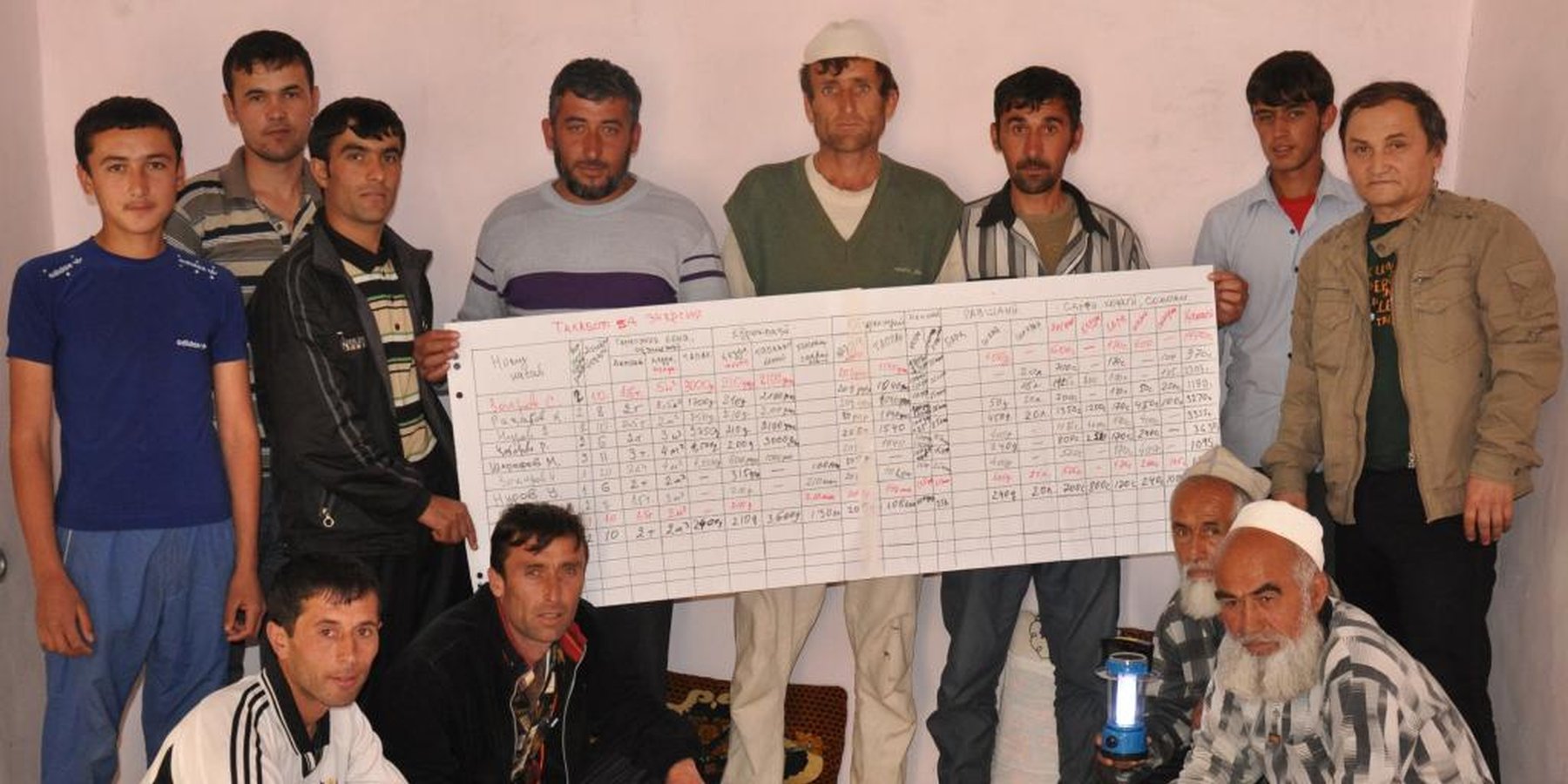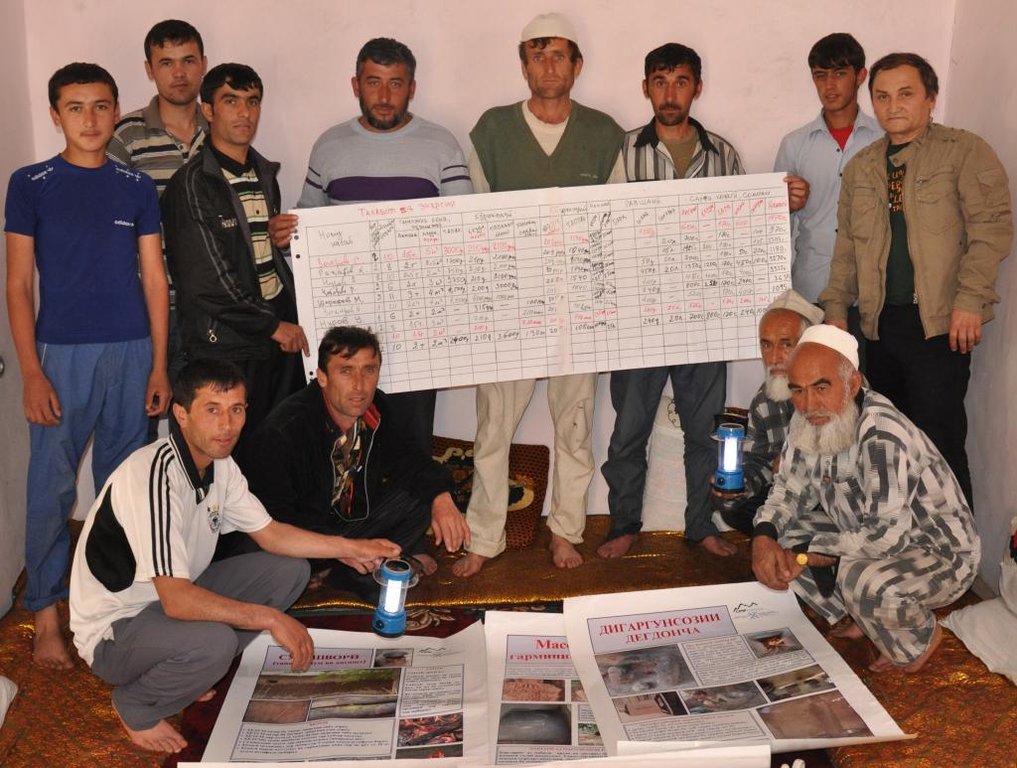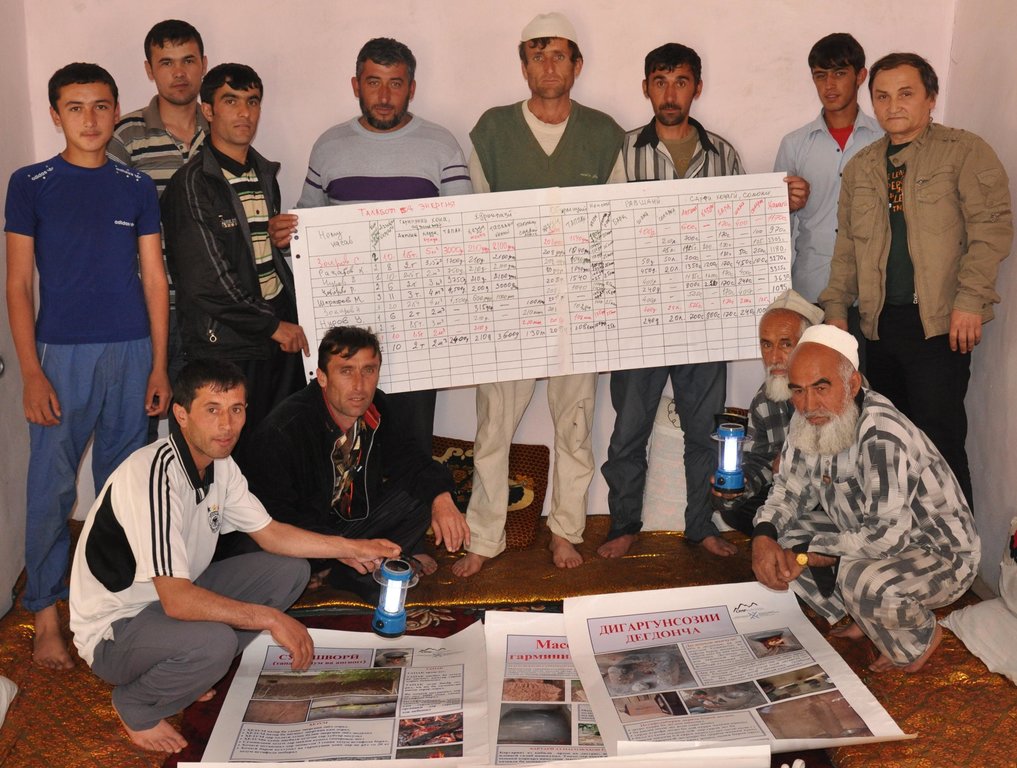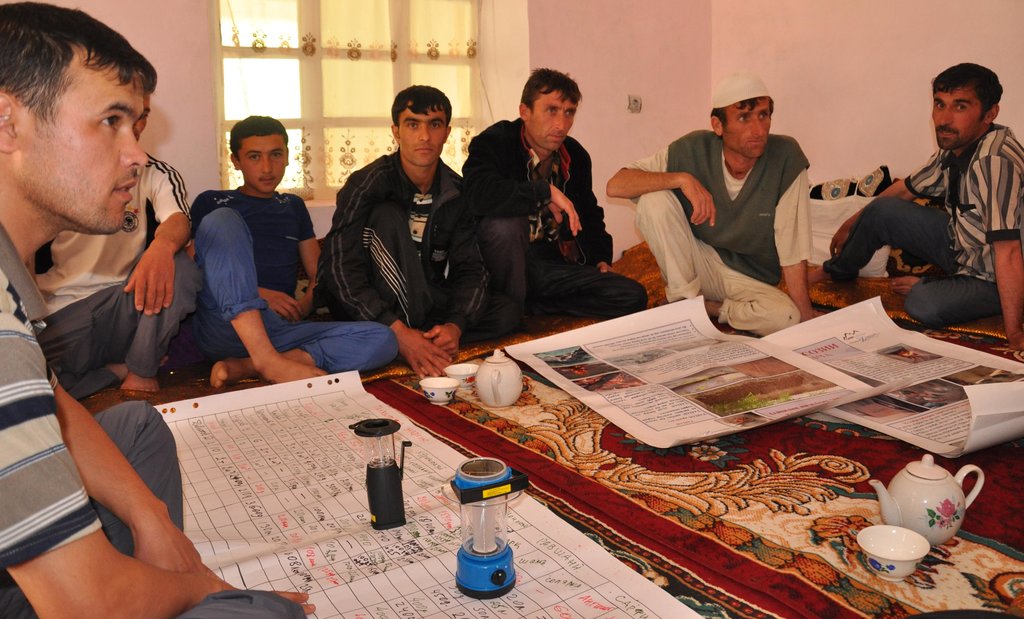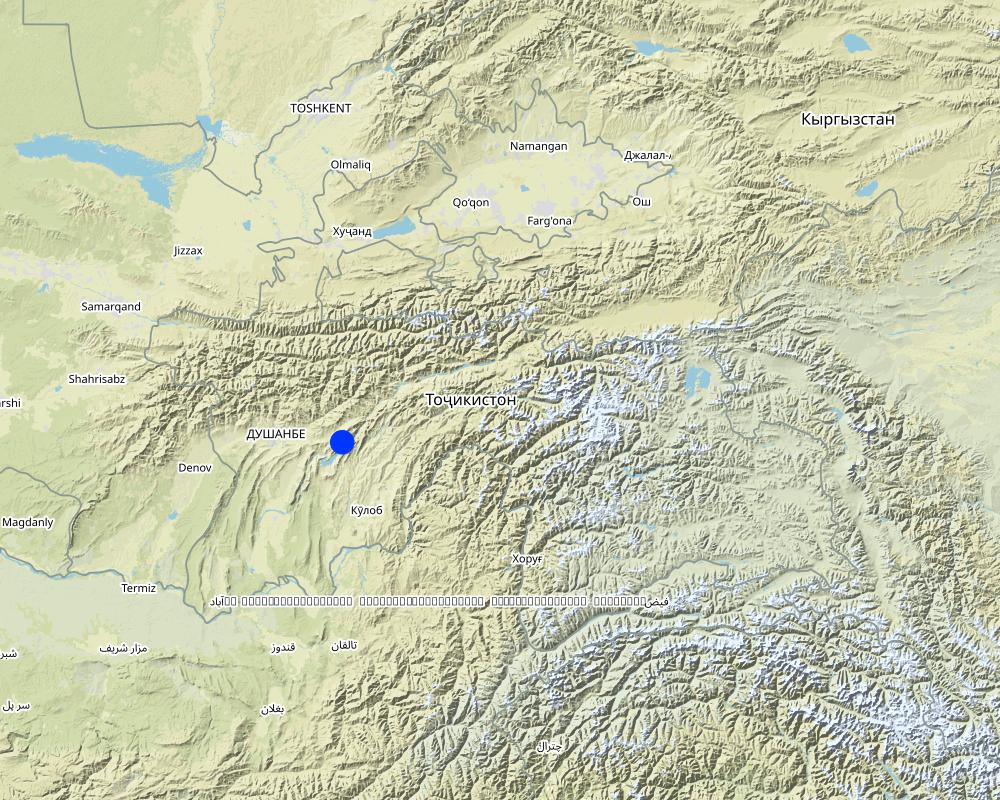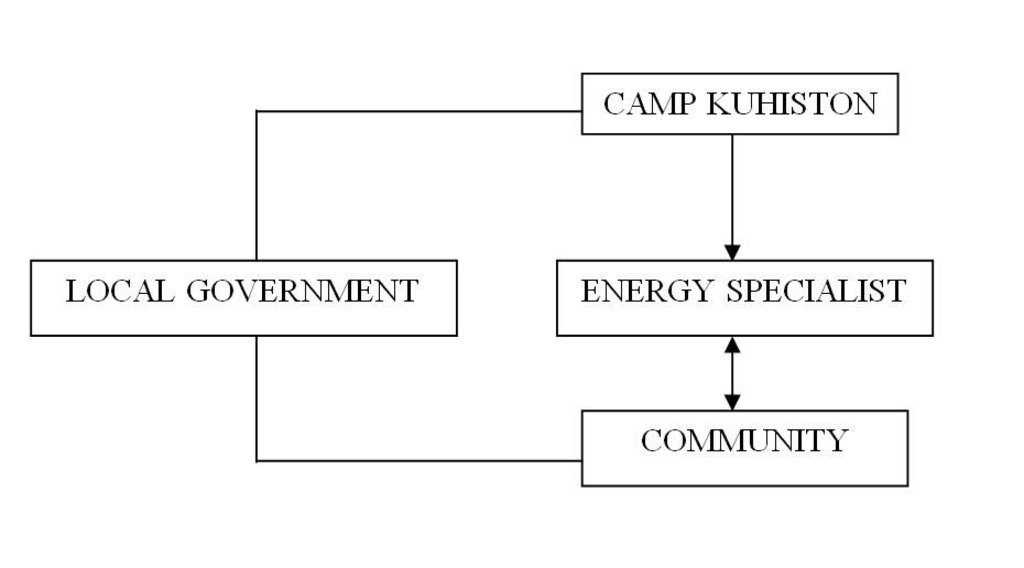Participatory Cost Benefit Analysis for Energy Efficiency Measures [Tajikistan]
- Creation:
- Update:
- Compiler: shane stevenson
- Editor: –
- Reviewers: David Streiff, Alexandra Gavilano, Joana Eichenberger
approaches_2442 - Tajikistan
View sections
Expand all Collapse all1. General information
1.2 Contact details of resource persons and institutions involved in the assessment and documentation of the Approach
SLM specialist:
Pochoev Mirzo
992 44 601 55 05
CAMP Kuhiston
Dushanbe
Tajikistan
Name of project which facilitated the documentation/ evaluation of the Approach (if relevant)
Pilot Program for Climate Resilience, Tajikistan (WB / PPCR)Name of the institution(s) which facilitated the documentation/ evaluation of the Approach (if relevant)
CAMP - Central Asian Mountain Partnership (CAMP - Central Asian Mountain Partnership) - Kyrgyzstan1.3 Conditions regarding the use of data documented through WOCAT
When were the data compiled (in the field)?
25/04/2011
The compiler and key resource person(s) accept the conditions regarding the use of data documented through WOCAT:
Yes
1.4 Reference(s) to Questionnaire(s) on SLM Technologies
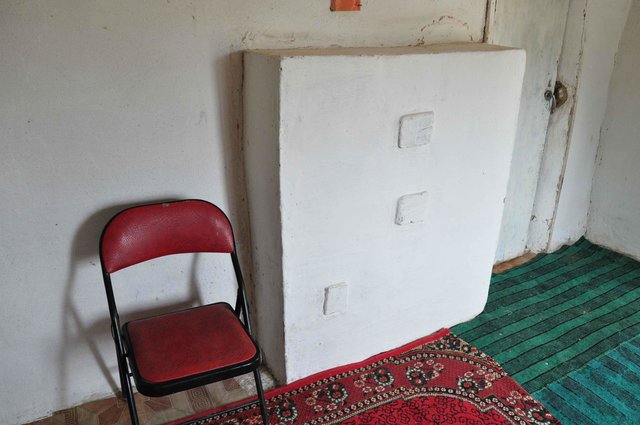
Two Room Stove [Tajikistan]
A brick stove that is built into the existing internal wall, that will heat the two rooms and can be used for cooking.
- Compiler: shane stevenson
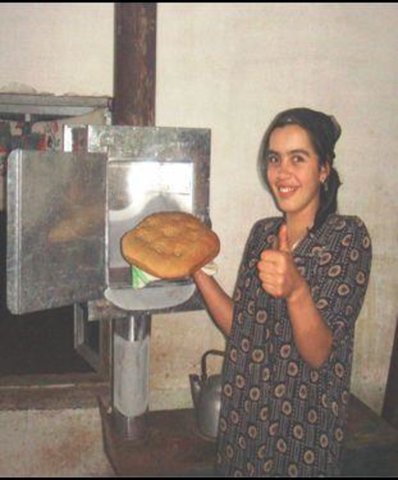
Energy efficiency measures to increase the application of … [Tajikistan]
The implementation of several low cost energy efficiency measures to reduce the amount of organic material used as fuel within rural households.
- Compiler: Daler Domullojonov
2. Description of the SLM Approach
2.1 Short description of the Approach
The use of a cost benefit analysis approach to assess the financial and natural resource needs for energy consumption at community level, and further attribute costs to SLM practices to meet this need, and subsequently improve rural livelihoods.
2.2 Detailed description of the Approach
Detailed description of the Approach:
Aims / objectives: To collate quantitative data on the amount of energy used within the community in terms of financial expenditure and natural resource use. Through the use of a participatory workshop the attendees determine which natural resources are being utilised, in the form of wood, bush and organic materials. The objective is to use this quantitative data to encourage through cost benefit demonstrations, the implementation of Sustainable Land Management technologies to reduce the amount of natural resources exploited, and the expenditure on energy consumption.
Methods: An energy specialist organises a community based workshop with up to 15 participants. In the 2-3hr workshop the participants complete, under guidance, a pre prepared flip chart on energy use (electric, tapak, wood, coal, brush). The information is collected in financial expenditure and weight. Once the energy assessment is completed a subsequent discussion is encouraged on how to more effectively meet this need at a community level. The moderator also takes this oppoprtunity to demonstrate several technologies including solar lights, improved stove design, thermal insulation, and the development of energy forests. The information is collated and used as a baseline assessment for evaluation of implemented technologies.
Stages of implementation: The stages of implementation are relatively straight forward. First you must select the community that you wish to work in, and inform a community mobiliser, in this case the head of the village that you wish to conduct a 2-3 hr workshop for up to 15 participants, and that the participants must be the person in the households who is responsible (or has knowledge of) the energy use within the household. The moderator prepares a flip chart with a table of fuel types used in the village and uses this as the basis of the workshop to extract information on energy use within the community. Once the information is collated, a discussion is encouraged to review the information and devise means by which this amount can be reduced. The moderator then takes this opportunity to demonstrate several low cost energy efficiency measures that may appeal to the community.
Role of stakeholders: The community are expected to attend the workshop, engage in active discussions on their energy use and ways in which it can be reduced. The workshop needs to be supported by the local government, this provides gravitas, and a platform to launch the approach in other communities. The final stakeholder is the implementer, in this case a local NGO who organises the workshop, demonstrates the technologies and provides ongoing support during the implementation of the technologies.
Other important information: It is important to understand the spending habits of the participants, if they are used to spending on a day to day basis and not used to financial planning, it is important to recognise this fact in the implementation of the technology.
2.3 Photos of the Approach
2.5 Country/ region/ locations where the Approach has been applied
Country:
Tajikistan
Region/ State/ Province:
RRS
Further specification of location:
Nurobod, Shaftuti Bolo
Map
×2.6 Dates of initiation and termination of the Approach
Indicate year of initiation:
2011
Year of termination (if Approach is no longer applied):
2012
2.7 Type of Approach
- project/ programme based
2.8 Main aims/ objectives of the Approach
The Approach focused mainly on SLM with other activities (Energy Conservation)
There were two main objectives to this approach, the first was to raise awareness on energy use with respect to types of energy, cost and accessibility, and to use this as a platform for encouraging the implementation of low cost energy efficiency measures in the community. The second was to collate baseline data to allow an assessment of how the implemented technologies impacted on energy (and by association natural resources) use and how the expenditure and amounts were reduced in real terms.
The SLM Approach addressed the following problems: This approach was designed to make the participants evaluate and assess the amount of money, time and effort that goes into meeting their energy needs. It is also a clear and precise way to collate information on the amount of natural resources that are been used to meet this need. These natural resources can be in the form on bushes, wood, dung, cotton sticks etc. These resources are being redirected from other purposes such as construction, but also as natural fertilisers, mulch and compost. This directly impacts on agricultural production, household finance and ultimately livelihoods. The reduction in resource use can reduce the risk of conflicts between villages, and reduce pressure on natural resources allowing them to rejuvenate, and increase soil fertility and quality.
2.9 Conditions enabling or hindering implementation of the Technology/ Technologies applied under the Approach
social/ cultural/ religious norms and values
- hindering
Rural communities emerging from the soviet system have very low business awareness. Even when there are seemingly obvious savings to be made in finance and natural resources there is a lack of appreciation of the potential savings that could be made.
Treatment through the SLM Approach: Discussion on the issue of savings in time, money and resources helps promote better understanding. The concept of pay back had to be repeatedly explained.
legal framework (land tenure, land and water use rights)
- enabling
- hindering
workload, availability of manpower
- hindering
There are times of year when the village participants are otherwise distracted by sowing seeds, harvesting, Ramadan etc.
Treatment through the SLM Approach: The most effective time would be at the end of the winter period when resources are scarce, money constraints are more apparent and energy use is a household priority issue.
other
- hindering
In many of the households the men are working away in Russia. This leaves the women in charge of the household, however, many of the energy costs are organised by the men before they leave or on their return.
Treatment through the SLM Approach: Many of the labour migrant leave in the springtime, therefore it would be more effective to organise the workshops at the end of the winter before they leave.
3. Participation and roles of stakeholders involved
3.1 Stakeholders involved in the Approach and their roles
- local land users/ local communities
A representative from each household in the community was involved.
Women hold a traditional role in the society and did not participate in the workshops. The men pay all the bills and see their role as that of the provider for the family.
The entire village suffers from mass labour migration, with nearly all households reliant upon remittances from Russia.
- SLM specialists/ agricultural advisers
International support and finance was provided for this approach, however, the questionnaire was developed in collaboration between national and international staff to ensure relevance and applicability to the context.
- NGO
CAMP Kuhiston
If several stakeholders were involved, indicate lead agency:
CAMP Kuhiston
3.2 Involvement of local land users/ local communities in the different phases of the Approach
| Involvement of local land users/ local communities | Specify who was involved and describe activities | |
|---|---|---|
| initiation/ motivation | none | |
| planning | none | |
| implementation | self-mobilization | they were active in the participation in the workshops and the collation of data. |
| monitoring/ evaluation | external support | Active in providing follow-up data to evaluate the success of the project. |
| Research | none |
3.3 Flow chart (if available)
Description:
The project employs an energy specialist to conduct a participatory workshop. The process is supported by the local government.
Author:
S. Stevenson (CAMP Kuhiston, Dushanbe)
3.4 Decision-making on the selection of SLM Technology/ Technologies
Specify who decided on the selection of the Technology/ Technologies to be implemented:
- mainly land users, supported by SLM specialists
Explain:
The participants are presented with a range of potential energy efficiency technologies such as stove adaptation, thermal insulation by experts, however, it is the participants decision as to which technologies are the most appropriate for their communtiy, and how they can implemented.
Decisions on the method of implementing the SLM Technology were made by mainly by land users supported by SLM specialists. One technology involved the adaptation of traditional cooking stoves; demonstrations were provided however, the mechanisms for securing the materials and ensuring the entire village implemented the technology were up to the discretion of the participants.
4. Technical support, capacity building, and knowledge management
4.1 Capacity building/ training
Was training provided to land users/ other stakeholders?
Yes
Specify who was trained:
- land users
If relevant, specify gender, age, status, ethnicity, etc.
The initial training was for all the households in the village, however, only the men attended due to the religious and cultural position of the region.
Form of training:
- courses
Subjects covered:
The training included raising awareness on stove adaptation, indoor two room stove construction, solar power, and low cost thermal insulation for rooms.
4.2 Advisory service
Do land users have access to an advisory service?
No
4.3 Institution strengthening (organizational development)
Have institutions been established or strengthened through the Approach?
- yes, moderately
Specify the level(s) at which institutions have been strengthened or established:
- local
Specify type of support:
- financial
Give further details:
The Jephcott Foundation financed local NGO CAMP Kuhiston to implement the approach.
4.4 Monitoring and evaluation
Is monitoring and evaluation part of the Approach?
Yes
Comments:
socio-cultural aspects were regular monitored by project staff through observations; indicators: Observations of participants understanding of economic benefits.
management of Approach aspects were ad hoc monitored by None through observations; indicators: international staff monitor the set up of the workshops and levels of participation.
There were few changes in the Approach as a result of monitoring and evaluation: The timing of the workshops (i.e the time of year) will be changed to the end of the winter when energy use is more of a priority issue, e.g. cold weather, poor electric supply, lack of easily accessible natural resources
There were no changes in the Technology as a result of monitoring and evaluation: None
4.5 Research
Was research part of the Approach?
Yes
Specify topics:
- sociology
- economics / marketing
Give further details and indicate who did the research:
CAMP Kuhiston collated data on energy usage and by association natural resource use. In addition to the participatory workshop CAMP conducted a household questionnaire to assess the suitability of different energy efficiency technologies, and the social vulnerability of the inhabitants, to identify the most effective households to implement energy saving activities.
Research was carried out on-farm
5. Financing and external material support
5.1 Annual budget for the SLM component of the Approach
If precise annual budget is not known, indicate range:
- < 2,000
Comments (e.g. main sources of funding/ major donors):
Approach costs were met by the following donors: international non-government (Jephcott Foundation, UK): 100.0%
5.2 Financial/ material support provided to land users
Did land users receive financial/ material support for implementing the Technology/ Technologies?
No
5.3 Subsidies for specific inputs (including labour)
- equipment
| Specify which inputs were subsidised | To which extent | Specify subsidies |
|---|---|---|
| Posters and stationery | fully financed | |
- construction
| Specify which inputs were subsidised | To which extent | Specify subsidies |
|---|---|---|
| Metal sheets, demonstration material | fully financed | |
Comments:
Metal sheets and some other basic materials were provided for the demonstration adaptation of the outdoor cooking stoves.
5.4 Credit
Was credit provided under the Approach for SLM activities?
No
5.5 Other incentives or instruments
Were other incentives or instruments used to promote implementation of SLM Technologies?
Yes
If yes, specify:
The Jephcott Foundation financed local NGO CAMP Kuhiston to implement the approach.
6. Impact analysis and concluding statements
6.1 Impacts of the Approach
Did the Approach help land users to implement and maintain SLM Technologies?
- No
- Yes, little
- Yes, moderately
- Yes, greatly
The extent to which it will reduce the amount and type of natural resource use will be re assessed at the end of the project. It is estimated that there will be a 20% reduction.
Did the Approach empower socially and economically disadvantaged groups?
- No
- Yes, little
- Yes, moderately
- Yes, greatly
The approach was implemented in a socially disadvantaged area.
Did other land users / projects adopt the Approach?
- No
- Yes, little
- Yes, moderately
- Yes, greatly
Did the Approach lead to improved livelihoods / human well-being?
- No
- Yes, little
- Yes, moderately
- Yes, greatly
The stove adaptation should lead to a 10-20% reduction in natural resources used for cooking, and the solar lights could make a $100/year saving.
Did the Approach help to alleviate poverty?
- No
- Yes, little
- Yes, moderately
- Yes, greatly
It should help reduce spending on energy, dependence on natural resources, and increase the amount of organic materials for agricultural purposes.
6.2 Main motivation of land users to implement SLM
- increased profit(ability), improved cost-benefit-ratio
The approach is designed to highlight to households how much of their income they spend on energy.
- prestige, social pressure/ social cohesion
Social pressure ensured all the households participated.
- well-being and livelihoods improvement
Improvement in living conditions and saving of finance and natural resources.
6.3 Sustainability of Approach activities
Can the land users sustain what has been implemented through the Approach (without external support)?
- uncertain
If no or uncertain, specify and comment:
The participants will be encouraged to re-assess their natural resource use in the following year, and hopefully instigate their own measures to tackle the issue.
6.4 Strengths/ advantages of the Approach
| Strengths/ advantages/ opportunities in the land user’s view |
|---|
| Quick and simple way to put an economic cost on fuel use. |
| Strengths/ advantages/ opportunities in the compiler’s or other key resource person’s view |
|---|
| The approach needs minimal resources and is relatively easy to implement. (How to sustain/ enhance this strength: It would be easy to replicate and easy to teach others how to undertake the approach.) |
| It makes participants evaluate what they need to run their households, and puts an economic and natural resource value on the process. |
| It helps focus the participants on how much time, effort and money are being used to run their household. (How to sustain/ enhance this strength: To follow up, to see how effective the implementation of the technologies was in reducing their energy needs.) |
| The scope of the level of participation is flexible and can be adapted to the contexts. It allows for direct comparison for before and after the implementation of the technology. (How to sustain/ enhance this strength: It could be further developed to put an economic value on SLM technologies.) |
6.5 Weaknesses/ disadvantages of the Approach and ways of overcoming them
| Weaknesses/ disadvantages/ risks in the compiler’s or other key resource person’s view | How can they be overcome? |
|---|---|
| It requires participants to have good quality data available to be effective. | Complete follow up visits to households to check data quality. |
7. References and links
7.1 Methods/ sources of information
- field visits, field surveys
- interviews with land users
Links and modules
Expand all Collapse allLinks

Two Room Stove [Tajikistan]
A brick stove that is built into the existing internal wall, that will heat the two rooms and can be used for cooking.
- Compiler: shane stevenson

Energy efficiency measures to increase the application of … [Tajikistan]
The implementation of several low cost energy efficiency measures to reduce the amount of organic material used as fuel within rural households.
- Compiler: Daler Domullojonov
Modules
No modules


